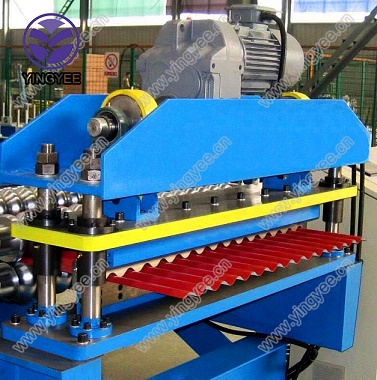
Understanding Sandwich Panel Roll Forming Machines
In the modern construction industry, the demand for efficient, durable, and versatile building materials has led to the increased use of sandwich panels. Sandwich panels consist of two thin outer sheets, typically made of metal, with an insulating core material, such as polyurethane or polystyrene, sandwiched between them. To produce these panels at scale, sandwich panel roll forming machines have become a vital piece of equipment.
What is a Sandwich Panel Roll Forming Machine?
A sandwich panel roll forming machine is a specialized piece of equipment designed to produce sandwich panels in a continuous process. The machine typically includes a series of rollers that shape the metal sheets into the desired profile while simultaneously bonding them with the insulating core material. This process is not only efficient but also ensures that the panels are uniform in size, shape, and quality.
The Process
The operation of a sandwich panel roll forming machine begins with the feeding of raw materials metal sheets and insulating core material. The metal sheets are generally fed into the machine on a conveyor belt, where they undergo a series of forming steps. Rollers shape the edges of the metal sheets, creating grooves that will help ensure proper adhesion to the insulating core.
Once the metal sheets are profiled, they are brought into contact with the insulating core material. In many modern machines, this is done using advanced technology that applies adhesive or employs heat to ensure a tight bond between the layers. After the sandwich is assembled, it passes through additional rollers to apply finishing touches and further secure the layers together.
Finally, the fully formed sandwich panels are cut to the required length before being collected for packaging and distribution. This high-speed production process allows for the rapid manufacture of high-quality panels, capable of meeting the demands of large construction projects.

Advantages of Using Sandwich Panel Roll Forming Machines
1. Efficiency One of the primary benefits of these machines is their ability to produce large quantities of panels with minimal operator intervention. This leads to significant time savings compared to traditional manufacturing methods.
2. Cost-Effectiveness By reducing labor costs and material waste through precision engineering, companies can lower their overall production costs.
3. Quality Control Roll forming machines offer consistent results, leading to better quality control. The uniformity of the panels enhances their performance and aesthetic appeal.
4. Versatility Sandwich panels can be customized for various applications, ranging from industrial buildings to residential homes. The machines can be adjusted to create different profiles and insulation thicknesses as needed.
5. Sustainability Many modern sandwich panels are designed with energy efficiency in mind, helping to reduce energy consumption in buildings. This aligns with growing trends toward environmentally responsible construction practices.
Conclusion
Sandwich panel roll forming machines are essential in the production of high-quality sandwich panels. Their efficiency, cost-effectiveness, and ability to produce customizable solutions make them invaluable in the construction sector. As the demand for energy-efficient and durable building materials continues to rise, the technology behind sandwich panel production will undoubtedly evolve, further enhancing its significance in modern construction practices. Investing in these machines can position manufacturers to meet the growing needs of the market effectively.